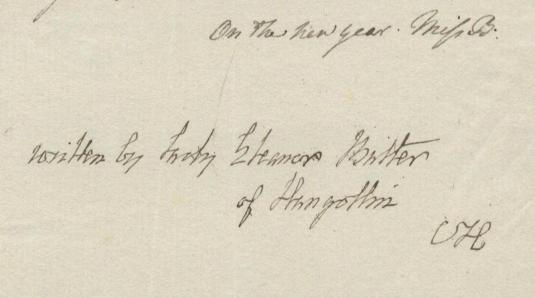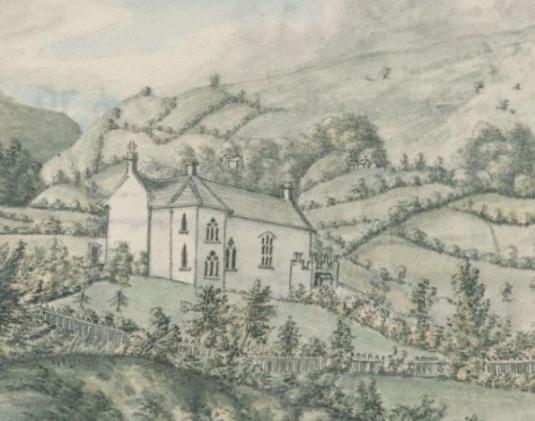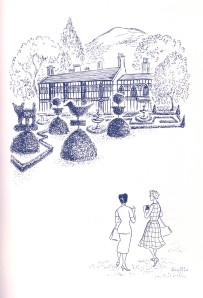
A mystery ‘CH’ affirms that the poem was written by Lady Eleanor Butler of Llangollen. This, one of two poems (the other showing Sarah Ponsonby’s handwriting, though not of her composition), was sold at auction in 2013.
Here’s the catalogue description:
TWO AUTOGRAPH POEMS, one by Eleanor Charlotte Butler (1739-1829), the other written but apparently not composed by Sarah Ponsonby (1755-1832), both identified as being in their respective handwritings by ‘CH’, both being on very small, delicate and neat hands; Lady Butler’s poem ‘On the New Year’, 12 lines, beginning ‘Thus oft, when Youth has fled, when health decays…’, 1 page, small folio; Sarah Ponsonby’s poem, addressed to Diana, 36 lines in five stanzas, beginning ‘Since thou and the stars, my dear Goddess desire…’, inscribed ‘Written but no[t] composed by Miss Ponsonby of Llangollen’, 2 pages, small folio, the paper from the same stock, formerly pinned together
If anyone has information about what happened to these after the sale, or who “CH” turned out to be – do say!
An interesting, more recent, auction concerned articles in the library of Elizabeth Greenly (1771-1839) [see page 83 of the PDF]. She kept DIARIES from 1784 until before her death – though evidently “edited” them during her lifetime. Two volumes once owned by her came from the library of SARAH and ELEANOR!

 In the 1950s Emily Kimborough wrote about her travels to Wales in the book
In the 1950s Emily Kimborough wrote about her travels to Wales in the book 
Recent Comments